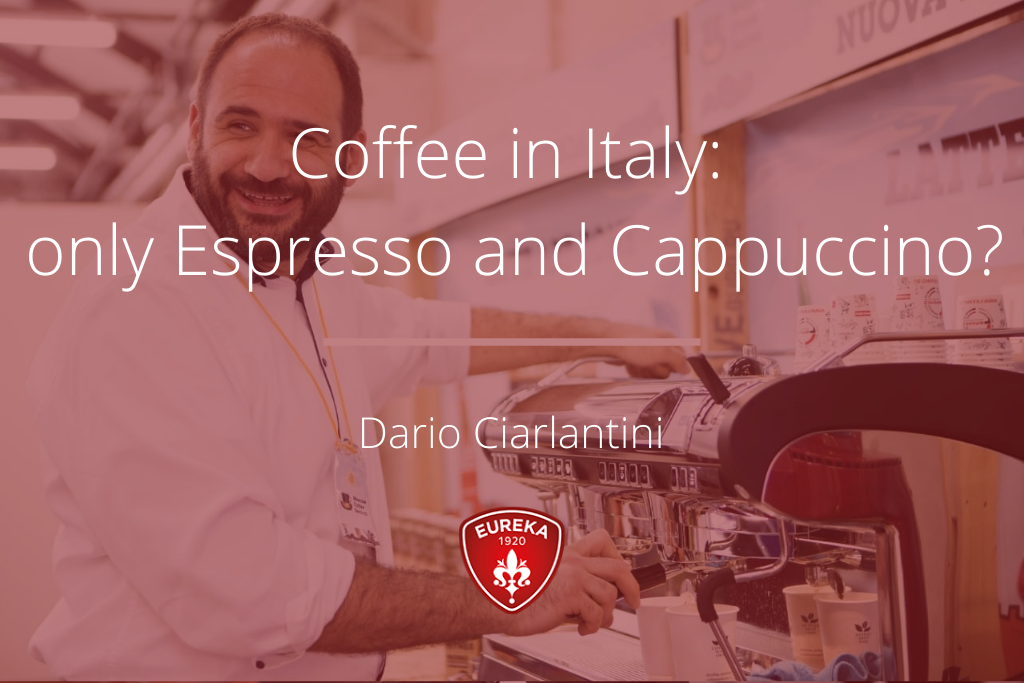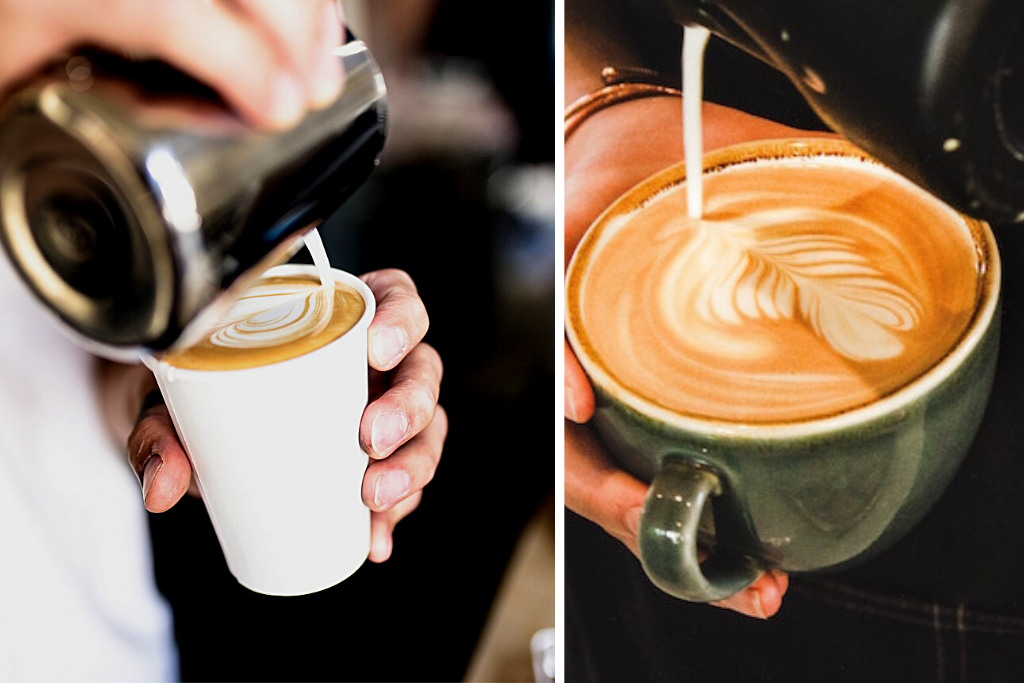Eureka Blog
Coffee in Italy: only Espresso and Cappuccino?

There is a stereotype that is becoming more and more limiting for our sector, that is that when Italians go out for coffee they can only choose between two types. It’s true, foreign customers are used to going to a coffee shop and choosing from a huge list of drinks, while in Italy they are often forced to settle for a more depressing (but that’s a whole different story) menu: after the typical espresso (often simply called coffee - sigh!) and cappuccino, the list moves on to decaf, tea (green tea, black tea, red tea, tea tree… no wait! not that last one!) and chamomile tea, which seems to confirm the common belief on Italian limits. I said “seems” as it is not actually true! What the menu doesn’t say, and therefore foreign customers do not know, is that Italian baristas are flexible and can customise orders, adapting the recipe to each specific request. This is hardly ever written in the menu, but it is still quite relevant. Let’s see why!
The flexibility of Italian baristas
Business owners are constantly complaining that the price of espresso or cappuccino is too low. They spend sleepless nights thinking of a possible EUR 0.10 increase. But the owners themselves started this trend, respectively damaging one another by lowering the price by EUR 0.10 at a time, and then justifying themselves saying “that’s the only way we can get people to keep coming in here!” Once again, a great solution could be to think differently, trying to identify with the customer and asking oneself: “What do I want when I’m on the other side of the counter? What do I look for when I feel like going out for a coffee?” I probably want to be able to choose from a range of offers, captivating proposals and, why not, an international touch. I want to choose from a detailed menu with different and codified recipes, and not leave it up to my descriptive capacity in that moment.
If you ask an Italian barista for a caffè macchiato in an extra-large cappuccino cup, with a ristretto, but not too short; hot milk, but not too hot; medium-cold soy froth; and a sprinkle of cocoa; when it’s time to pay they’ll just say “well, just give me an extra EUR 0.10”. Let’s enjoy this flexibility. Let’s make it part of our commercial offer so that it can grow and give the right value to the creativity that often accompanies all work behind the counter. They’ve already done it abroad, giving a name and a price to each variety, even if the difference lies in just a few millilitres of extra milk.
Milk and coffee, the perfect combination
It is a common mistake for Italian baristas who are asked “Sorry, can I have a Latte, please?” to firmly answer “hot or cold?”, smiling for the lousy Italian spoken by the tourist and ignoring that abroad Latte means Latte Macchiato and not white milk. How do you prepare it? It must be served in a glass cup of about 240-350 ml. First, you add the frothed milk and wait – to create space between the froth and the milk. Then, you add an espresso, better if served on the side so that the customer can decide how much to actually add. The result is a cup with three captivating, coloured layers, which is exactly what differentiates it from other similar drinks. Lately, it is not uncommon to also find the Maxi-Cappuccino, also known as Cappuccione or whatever else you want to call it. This drink is more and more common among female customers, maybe because the sweet taste of milk is a bit stronger than the coffee. It is served in a 240-350 ml cup with espresso and frothed milk just like a cappuccino. Differently, it is harder to Italianize the Flat White, a real icon in the world of international coffee. This is prepared in a cappuccino cup with a double espresso. You then add the frothed milk with a thin layer of froth which also favours the bravest virtuosity of Latte Art. The goal is to make the coffee intense, mixed with a good amount of milk. To compare it with an Italian drink, it would be as if we asked for a cappuccino with a double espresso and not much froth. In the past few years, Espresso Macchiato has become a must-have in Italy, also known abroad and sometimes simply referred to as Macchiato, which is not just an espresso with a bit of hot milk, but a real mix of technique and experience! The barista has to emulsify the milk with great intensity to create dense and soft froth. It is served in a small espresso cup (6 cm x 6 cm) filled to the edge, possibly creating a captivating (de)sign on the top. How could we not value this piece of art and give it a special place in the menu, also recognizing its true economic value?

Somewhere in between an espresso macchiato and a cappuccino
Espresso macchiato and cappuccino are found at two opposite extremes of a great variety of coffee specialities and recipes in the coffee shop. There’s usually a very slight difference, but they both have their own history, tradition and sense of belonging.
If we take an espresso macchiato, add more milk and serve it in a glass cup, slightly bigger than usual, we will have the Capo in B from Trieste, also known in Italy as Macchiatone. It is very similar to the international Cortado. Very common in the Iberian Peninsula, it is often served in a 100-120 ml cup. It is prepared with a double espresso and – wink wink for those who have a sweet tooth! – condensed milk or Dulce de Leche.
Adding cocoa to our Macchiatone gives life to a never-ending list of names: among the most well-know there are Marocchino, Bianchino, Bianchetto (or maybe that’s a type of wine???) and so on and so forth. This must not be confused with the Mocaccino (also known as Caffè Mocha), made with liquid hot chocolate and cream, always served in a 100-150 ml cup.
The drink Italians are less interested in is the Americano, well-appreciated abroad, tasty and very easy to prepare. All you need is to extract an espresso in a cappuccino cup and add some hot water, even better if served on the side. If we want to take it a bit further, we could also include the Long Black in our list; same ingredients as for the Americano, but prepared the other way around: first, you fill the cup with hot water and then you add the extracted espresso…isn’t that something! Let’s not forget that recipes, names and quantity have not been registered by anyone. Your experience may differ, but if you think about it even the most famous drink in the world is sipped differently depending on where you are.

Towards a truly complete menu
If such a wide offer is clearly described in the menu, the customer can more easily understand the true value and different shades of coffee in a coffee shop. This will probably help customers choose what is best for them, also changing their preference during the week or maybe even during the day. More and more people are experiencing their passion for coffee in different ways, and depending on the time of the day, they may choose one thing or another! Baristas should see this as an incentive to their search for creativity, continuing to express their flexibility in a more codified way, capable of giving the right value and price to their cups and work.
